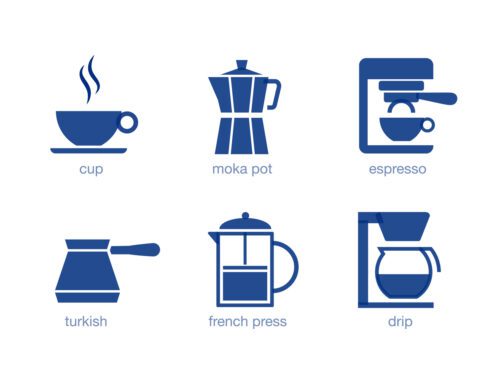In coffee, the term "acidity" refers to a desirable quality perceived as a bright, tangy, and sometimes sharp flavor that adds complexity to the overall taste of the coffee. It is not related to the pH level of the coffee but rather to the perceived taste of the beverage.
Acidity is often described as a sensation similar to citrus fruits or tart berries. It is caused by the presence of organic acids in the coffee, such as citric acid, malic acid, and tartaric acid, which give the coffee its bright and lively flavor.
The level of acidity in coffee can vary depending on the origin of the beans, the roast level, and the brewing method. For example, coffees from specific regions, such as Ethiopia or Kenya, are often known for their high acidity, while darker roasts tend to have a lower bite.
Overall, acidity is an essential characteristic of coffee that contributes to its flavor profile, and many coffee drinkers highly value it.
Type of Coffee Bean
The type of coffee bean can have a significant effect on the acidity of the resulting coffee. There are two main species of coffee beans: Arabica and Robusta.

Arabica beans are known for their higher acidity and a more comprehensive range of flavor notes. They are grown at higher elevations and in cooler climates, which results in a slower maturation process and a more complex flavor profile. Arabica beans can have a bright, tangy acidity, often fruity or citrusy.
Robusta beans, on the other hand, are generally lower in acidity and have a more straightforward flavor profile. They are grown at lower elevations and warmer climates, resulting in a faster maturation process and a more straightforward flavor profile. Robusta beans can have a more bitter and earthy taste with less acidity than Arabica beans.
However, it's important to note that within each species, there can be a wide range of flavors and acidity levels depending on the specific variety, growing conditions, and processing methods used. For example, within Arabica beans, the acidity can vary greatly depending on the origin of the beans and the processing methods used.
Roasting
The way coffee is roasted can have a significant impact on its acidity.

During roasting, the organic acids contributing to the coffee's acidity break down and transform into other compounds. As a result, the longer the coffee is roasted, the lower its acidity tends to be.
Lighter roasts generally preserve more of the original acidity of the coffee beans, as the beans are roasted for a shorter period and at lower temperatures. This can result in a bright and tangy coffee with higher perceived acidity.
On the other hand, darker roasts tend to have lower acidity, as the beans are roasted for a more extended time and at higher temperatures. This can result in a smoother, less tangy coffee with more roast flavor and bitterness.
Brewing Method
One factor to consider is how long the coffee grounds are in contact with the water.

The longer the coffee is brewed, the more time the water has to extract acids and other compounds from the beans, resulting in higher acidity. For example, a cold brew coffee steeped for several hours will generally have a higher perceived acidity than a traditional drip coffee brewed in just a few minutes.
Another factor to consider is the temperature of the water used for brewing. Hotter water generally results in a coffee with higher acidity, as the heat can help to extract more acids from the beans. On the other hand, brewing coffee with cooler water can result in a coffee with lower acidity.
The brewing method can also play a role in the acidity of the coffee. For example, a French press coffee tends to have a fuller body and lower acidity than a pour-over coffee, which has a lighter body and higher perceived acidity.
This is because the French press allows more oils and sediment from the coffee beans to remain in the final cup, while the pour-over method filters out these elements, resulting in a cleaner and more acidic cup.
The brewing method can significantly impact the coffee's perceived acidity and other flavor characteristics such as body, sweetness, and bitterness.
Conclusion - Acidity and Coffee
In conclusion, coffee's acidity is an essential characteristic that can significantly impact its flavor profile. The acidity of coffee is not related to its pH level but instead to its taste's perceived brightness, tanginess, and sharpness.

Many factors can influence the acidity of coffee, including the type of coffee bean, the roast level, the brewing method, and water temperature.
Understanding the impact of these factors can help coffee drinkers to select a coffee that suits their taste preferences.
